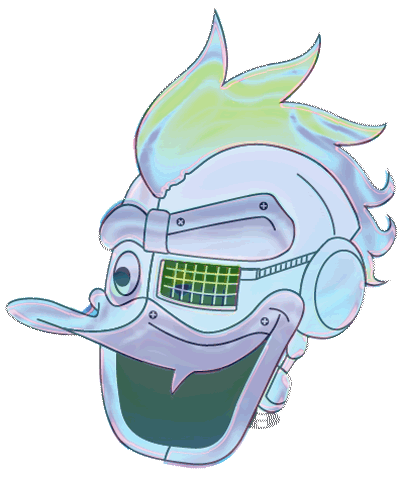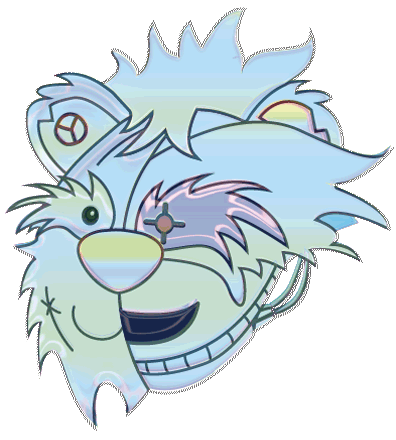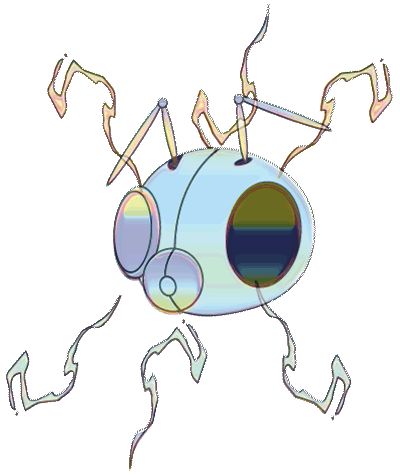



The Sheep Market by Aaron Koblin
The Sheep Market by Aaron Koblin is a series of 10,000 simple images of sheep drawn by online workers. Stylistically, the sheep range from the indecipherable to the extremely detailed and cute. You can view the sheep on a web site, buy them on stickers, or have them fill your field of vision as part of a gallery installation. They serve as a metaphor for the sharecropping masses of Web 2.0 projects. And their production speaks of the future of art and creative production.
Like Pop Art’s mass production or the yBA’s outsourcing, net.art’s basis in the internet reflects the paradigmatic means of production of its age. net.art has struggled to create aesthetic and social value that makes use of a very effective medium for the creation and distribution of images and ideas. In doing so it is no different from Impressionist use of tube oil paint, colour theory, and train lines. Also similar to Impressionism it provides an illusion of difference and respite for an urban audience eagerly familiar with its subject matter. And again like Impressionism, the most successsful net.art break out of its immediate context to be of broader interest as art.
In the net era of web services, Amazon has launched a service called “Amazon Mechanical Turk” (AMT). Its name comes from the famous hoax chess-playing automata of the 18th century. Rather than clockwork and levers the original Mechanical Turk automata contained a human being hidden inside to plan strategy and to move the chess pieces. Amazon’s service also contains human operators rather than (computing) machinery. A program that calls AMT across the internet will eventually get a response from a human being who has accepted the task and will be paid a few cents for doing so. Human labour atomized and exposed through an API turns the old science fiction nightmare of humans being reduced to components in computer-run machinery into a market reality.
Aaron Koblin has used AMT to create “The Sheep Market”. Through AMT, clickworkers were asked to “draw a sheep facing left”. Sheep are easy to draw (try drawing one now and compare it to the ones in The Sheep Market). They can be as simple as a cloud with sticks for legs and two dots for the eyes. If you want extra realism, you can add a muzzle and ears. Their familiarity and benign cultural associations are a good source of artistic value. Many people like images of sheep. Since this is work for hire, the copyright and the ability to economically exploit the drawings passes to the person who has commissioned the work.
Sheep may appear carefree in art, but they are well-established symbols of the pastoral in art. They are tended by shepherds who reflect (or fail to reflect) the virtue of the much more sophisticated ruling class. They gambol about the country retreats of the nouveau riche in lands made great by being part of a powerful nation. The illustration of the values of the sophisticated by the unsophisticated (of the urban bourgeoisie by country yokels) is the social content of the pastoral. Pastoral reinforces the universal rightness of their audience’s values and an immanent apologia for wealth, power and inequality.
The pastoral might seem an outdated genre, but Julian Stallabrass in “High Art Light” describes the core of much yBA art of the 1990s as a kind of “urban pastoral”, with virtue illustrated in activities of the urban dispossessed rather than the labourers of the countryside. Damien Hirst has worked more literally with the pastoral tradition, playing against its traditions by placing a dead lamb in formaldehyde. Hirst’s sheep is advertising its fixation, illustrated by a pretty baa-lamb; it is a Fontainebleau scene for the Ditcherati. If Hirst and other yBAs have changed the form of the pastoral, they have not changed its social content or context.
The same is true for the sheep of The Sheep Market. They are vehicles for the virtues of the market as seen by people who will never have to toil in its fields. They are tended by atomized labour reduced to moments of payment in the dynamic market. The great thing about the market, we are told, is that there are winners and losers. Anyone can get rich. The clickworkers who accept twenty cents to draw a sheep are not employed by the project. They have no employers that they can organize to engage with or to negotiate terms with. The illusion of general choice in the market is stripped away in a race to the bottom of remuneration.
For the market capitalist, this is the epitome of the virtues of their sophisticated worldview reflected in the simple hicks who provide the clicks. The sheep of The Sheep market gambol across this landscape, fulfilling their historical destiny in a postindustrial virtual pastoral, their shepherds replaced with click workers. This is the future of unskilled technological labour. But the Sheep Market doesn’t seem to reflect that it may be the future of skilled affective labour and even of arts-managerial labour.
This is a possible nightmare future of affective labour and art. Be paid a few cents to rhyme two lines or to sketch a cup. The results will be worked into a number one single or a painting sold at Frieze. The current affective economy, filled with short-term placements and other barely break-even temporary jobs, is McJob based. Affective McJobs do not provide long-term-employment, a decent wage, or a stepping stone to a better job. But they provide employment for more than a few minutes at a time and for tasks broken down only to assembly line levels.
The Sheep Market is very succesful net.art. It takes the newest capabilities of internet-based systems and uses them competently to make art. This art is technically and operationally indistinguishable from the normal operation of the internet but creates an aesthetically and conceptually rich experience. The results are both a playful piece of art and a continuation of an artistic genre with more contemporary relevance than most people realise.
This work is licensed under a Creative Commons Attribution-Share Alike 3.0 License.